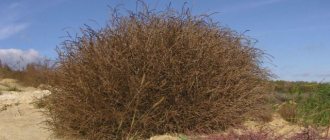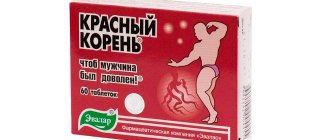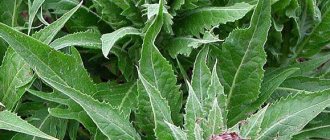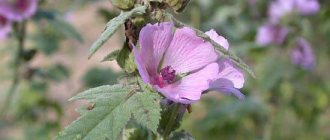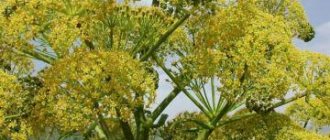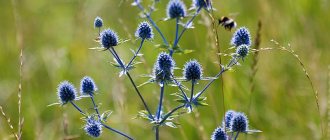This article talks about dandelion root: its healing properties and contraindications, as well as recipes for the treatment of various diseases. You will learn when to harvest dandelion roots, what benefits and harms dandelion root brings, how to use it to lose weight, cleanse the liver and blood vessels, increase the flow of breast milk, and much more.
Medicinal properties of dandelion root
Dandelion officinalis is a unique natural weapon for healing. Its root contains a large number of healing substances - organic acids, tannins, a lot of potassium and calcium, vitamins A, B1, B2, K, C, E, PP, flavonoids, essential oils, sterols, inulin, bitterness, mucus, wax and much more.
As a result, dandelion roots exhibit the following pharmacological properties:
- sedative;
- blood purifying;
- diuretic;
- bactericidal;
- diaphoretic;
- antispasmodic;
- antisclerotic;
- choleretic;
- multivitamin;
- anticarcinogenic;
- laxative.
Due to these properties, dandelion root promotes digestion, stimulates appetite, restores electrolyte balance, and also balances beneficial bacteria in the intestines. Preparations based on it have a beneficial effect on the secretory and motor functions of the gastrointestinal tract. They cause irritation of taste receptors, which entails stimulation of the food intake center. The secretion of digestive substances increases.
What exactly does dandelion root cure? Diseases in the fight against which the plant brings undoubted benefits include:
- diabetes;
- arthritis, gout, osteoporosis, arthrosis;
- hepatitis, cholecystitis, pancreatitis;
- constipation, diarrhea;
- febrile conditions, tuberculosis;
- low acidity of gastric juice;
- anemia, loss of appetite;
- fungal diseases;
- eczema, furunculosis.
Also in folk and traditional medicine, dandelion roots are used as an anthelmintic remedy for neuroses, loss of strength, apathy and poor sleep.
Indications for use of dandelion officinalis
Dandelion has many beneficial properties that are used in folk and official medicine. Dandelion is used as a tonic and metabolic stimulant. Herbal preparations rich in inulin are useful for diabetes. They stimulate metabolism, maintain lipid balance and are effective in weight loss and immune system diseases.
For the same reason, people drink dandelion tea to cleanse the body of toxins and waste. Herbal medicine with the help of this plant helps improve blood composition, safely relieve swelling, and maintain healthy bones and joints. For rheumatism and arthritis, dandelion not only heals, but also relieves pain.
As a diuretic, dandelion helps cope with the consequences of food poisoning, high blood pressure, and edema.
In this case, the treatment does not lead to potassium deficiency, but resists the development of pathogenic microflora, has an anti-inflammatory effect and is prescribed for diseases of the bladder and kidneys.
The plant has an antipyretic, diaphoretic effect, useful for respiratory and seasonal viral diseases. Dandelion tea normalizes sleep, maintains body tone and relieves symptoms of stress.
Dandelion-based preparations are useful for constipation, lazy stomach syndrome and other digestive tract problems. The plant, if used as prescribed by a doctor, is effective for liver diseases.
Dandelion root is used in oncology as a supportive agent that naturally stimulates regeneration and has cleansing properties. In addition, dandelion improves blood composition, relieves inflammation and maintains normal metabolism.
When used externally, dandelion herb helps treat acne, eczema, warts and dry calluses, as well as burns, ulcers and other inflammatory processes.
Contraindications to the use of dandelion root
Dandelion root has contraindications:
- acute form of gastrointestinal diseases;
- stones in the gallbladder and its ducts;
- increased acidity of gastric juice;
- age up to 5 years;
- individual intolerance.
If you overdose on dandelion root, use may cause side effects such as vomiting, headache, nausea, dizziness and diarrhea.
Women should be careful before using dandelion root during pregnancy as the plant contains phytohormones.
Liver cleansing tincture recipe
Dandelion root has choleretic properties, so it helps get rid of bile stagnation and cleanse the organ of toxins. It is possible to use the plant as a prophylaxis for liver diseases, as well as as part of therapy for hepatitis.
Instructions for preparation and use:
- 4 tbsp. l. add crushed roots to one liter of water.
- Place the mixture over medium heat, bring to a boil and keep on the stove for another 25 minutes.
- Then the broth is cooled and filtered through cheesecloth.
Take the medicine an hour before meals, drinking 100 ml. This needs to be done 2-3 times a day.
This healthy decoction will cleanse the liver and blood of toxins, speed up metabolism and improve the absorption of nutrients, strengthen the immune system and normalize the flow of bile.
When to Harvest Dandelion Roots
The best time to collect dandelion root is September or October. It is then that the maximum amount of nutrients accumulates in the plant. Sometimes the collection of roots begins in early spring, before young leaves appear.
You cannot collect dandelion roots in an industrial zone, on city lawns, along highways and field roads, since such raw materials contain many harmful substances and mineral fertilizers.
Stages of collecting raw materials:
- Dig up the roots with a shovel and shake off the soil.
- Use a knife to cut off the above-ground parts, thin lateral roots and rhizomes.
- Rinse in cold water.
How to dry dandelion roots:
- Place the raw materials on fabric outdoors for several days.
- Check the roots periodically - cut and see if milky juice is released. As soon as the moisture has completely evaporated, collect the raw materials and take them to a dry, well-ventilated area.
- Lay out the roots in a layer of 3-5 cm and dry for 10-15 days.
Dandelion roots can be stored for up to 5 years.
Dandelion root - beneficial properties and uses
A gardener, summer residents do not like this plant at all. Dandelion (lat. Taraxacum officinale) is a difficult weed to eradicate.
One undestroyed flower is enough for the ripened seeds to sow the entire area. And yet, in spite of everything, the plant pleases the eye with yellow inflorescences in the green grass.
Ajale Photos
Botanical description of the plant and preparation
Dandelion root is vertical, thick, brown, white in cross section. When mechanically damaged, all parts release bitter juice.
The leaves in the basal rosette are lanceolate, toothed, up to 25 cm long and up to 5 cm wide. The peduncle is tubular, hollow inside.
The flower is bright yellow in the form of a single basket. After the plant fades, a bare receptacle remains.
Harvesting plant material is not difficult. It can be found almost everywhere.
The plant often covers fields, lawns and gardens with a continuous yellow carpet.
For medicinal purposes, leaves and flowers are collected during flowering, and the root is collected in the fall from the end of September.
Large roots are cleared of small lateral roots, dried in the sun for several days, washed, cut into small pieces and dried in a ventilated area.
Store in canvas bags in a dark and dry place.
Chemical composition and main active ingredients
Dandelion root is rich in substances related to sesquiterpenes, the glycosides taraxacin and taraxacerin.
Includes sterols, flavonoids luteolin-7-glucoside and cosmosin, sucrose, carotene, bitterness, tannins, traces of linoleic, palmitic, mellisic, oleanolic organic acids.
In addition, it accumulates inorganic elements and metals.
Substances of the triterpene series, inulin (24%), nicotinic acid, sigmasterol, sitosterol, choline, and B vitamins were isolated.
Dandelion herb contains:
- Proteins;
- Alcohols:
- vitamins B2, F, C;
- nicotinic acid.
Found in flowers:
- ascorbic acid;
- resins;
- wax;
- carotenoids;
- proteins, phosphorus;
- iron, manganese.
The amount of macro- and microelements even exceeds their content in many vegetables.
How to brew dandelion root
If you bought dandelion root at the pharmacy, check its color and smell - high-quality crushed raw materials do not smell of anything and are beige or dark brown in color. Taste the root. If you smell a moldy taste, the medicine has not been stored correctly and should not be used for treatment.
If you harvested the dandelion roots yourself, wash them with a brush under running water before preparing. Then dry for 24 hours.
There are three main ways to brew dandelion root:
- pour boiling water over the raw materials and place in a water bath;
- fill the raw material with cold water, leave overnight and boil in the morning;
- Pour boiling water over the raw materials and leave in a hermetically sealed container.
How to use dandelion root for weight loss
Dandelion root, the medicinal properties of which help to get rid of excess weight, consists in activating human life processes. This concerns improving metabolism, accelerating the removal of toxins/excess fluid, and the breakdown of fats. At the same time, the body maintains a balance level of potassium due to its content in the root.
The diuretic and laxative effect of this healing part of the plant is harmoniously combined with the saturation of the body with a complex of vitamins and potassium. This prevents the weakening of the body and loss of energy that is typical of many diets.
The intended use of this herbal remedy is to use an infusion prepared at the rate of 10-20 g of raw materials per 1 liter of boiling water. After infusing the mixture for 3 hours and straining, take up to 2 tbsp before meals. l. Increasing the dose is undesirable to avoid the opposite effect (increased appetite).
Along with this, low-calorie cotton grass root can be used fresh by adding it to salads. In this case, in parallel with the process of losing weight, unlike diets with food restrictions, it is possible to achieve replenishment of the body with nutrients.
It should be remembered that taking the root of this plant to lose excess weight involves combining it with proper nutrition and physical activity.
Use of dandelion root in folk medicine
Medicines based on dandelion root are widely used in folk medicine - gastroenterology, rheumatology, urology, endocrinology, neurology and dermatology. With the help of the plant you can cope with intoxication due to poisoning, restore the body in case of oncology and get rid of excess weight.
Dandelion roots improve hormonal levels and treat irregular menstrual cycles and mastopathy. Dandelion root for ovarian cysts reduces the volume of fluid inside the cyst, resolves it and prevents the appearance of new formations.
Use in the treatment of diseases
Dandelion-based medicines help with many diseases and pathological conditions. Their use against diseases is quite extensive:
| Diseases | Mode of application |
| general strengthening of the body | extract from plant flowers |
| antiviral, including during exacerbations of herpes | internal intake of fresh dandelion flowers, treatment of herpes ulcers and rashes with alcohol tincture |
| liver cleansing, cirrhosis relief | flower decoction |
| for rheumatism, relief of inflammation during exacerbation of rheumatoid arthritis and polyarthritis | flower extract |
| to reduce blood cholesterol | alcohol infusion |
| against colds and flu | alcohol infusion |
| for cleansing the skin, eliminating warts | fresh dandelion juice (milky juice) |
| for constipation | crushed, dried dandelion roots |
| to remove lamblia from the body | dandelion root decoction |
The following video talks about how to use dandelion for good.
Cleansing infusion for the liver
Dandelion root helps cleanse the liver and “disperse” bile, which clogs the channels and interferes with the removal of toxins. It is used not only to prevent liver diseases, but also as a medicine from dandelion root for hepatitis.
Ingredients:
- Dandelion root (chopped) - 4 tbsp.
- Water - 1 l.
How to prepare: Fill the raw material with water, put it on medium heat and boil for 20-25 minutes. Remove from heat, cool and strain through several layers of cheesecloth.
How to use: Drink 100 ml infusion 2-3 times a day 60 minutes before meals.
Result: An infusion of dandelion root for the liver destroys and neutralizes toxic substances that are in the liver and blood, improves metabolism, strengthens the body and restores the natural flow of bile.
Medicines with dandelion root
Traditional and folk medicine uses the root of Taraxacum officinale in the form of decoctions, tinctures, and ointments.
You can also make tea from the roots, which is an excellent substitute for store-bought mixtures containing flavorings that are harmful to the body.
- Dandelion root water decoction
A decoction of the root is most often used in folk medicine and is the main dosage form, which is used as:
- Choleretic;
- Enhances digestion;
- Antihyperglycemic;
- Anti-cold;
- Cholesterol lowering;
- Diuretic;
- Anticosidant and other agents.
How to prepare the decoction correctly:
- To prepare a decoction, you need to take 10 g of finely ground root, place it in a bowl and add 200 ml of boiling water.
- Cover the mixture and cook in a water bath for 15 minutes, remembering to stir.
- Remove from heat and leave for 45 minutes at room temperature.
- Next, the mixture is filtered and the remainder is squeezed out. Bring the resulting volume to 0.5 liters with boiled water.
It is necessary to store at temperatures below 0 C, no longer than 2 days.
Drink 80 ml. pre-heating, 3-4 times a day 15 minutes before meals.
Treatment of constipation is effective with the following composition. 1 tbsp. Brew a spoonful of chopped roots. Leave for 15 minutes, strain and consume. ¼ cup 3 times will help normalize stool. The main thing is not to forget to drink this miraculous natural medicine 30 minutes before meals.
- Dandelion milk infusion
1 tsp root per 250 ml of milk tones the intestines, treats problems with stool, and is a useful remedy for hemorrhoids.
- Dandelion Root Powder
Taraxacum officinale powder is used for constipation. Take 0.5 teaspoon with water 25-30 minutes before meals 3 times.
How to use healing yellow beauty powder for atherosclerosis?
Grind the dry root material and take 1 tbsp. 3 times throughout the day. It tastes bitter, so it’s better not to chew, hold it in your mouth until saliva coats it, then swallow. It is better to use with honey or sweet syrup.
- Collection with dandelion for insomnia
The following collection will help normalize sleep. You need to mix 1 part lemon balm and roots with 2 parts mint. 1 tsp collection, pour 1 liter of boiling water. Take half a glass before bed. It is recommended to add honey if the patient does not suffer from allergies.
The roots collected in the first month of spring are used for inflammation of the lymph nodes. Grind the dug up roots to a porridge state. Place the mixture in gauze and apply to the lymph node. Secure the compress with a bandage and hold for 40 minutes. The same recipe will help cure bumps formed due to hemorrhoids.
- Dandelion alcohol tincture
Alcohol tincture is also popular. Pour 2/3 cup of finely chopped roots with 0.5 liters of alcohol or vodka.
Then seal the bottle and hide it for 14 days in a place where light does not penetrate. The contents must be shaken every 3 days.
This drug treats epilepsy, joint diseases, and improves immunity. For medicinal purposes, drink 1 tbsp. spoon at least 3 times a day.
- Dandelion coffee
Sunflower root can be used to replace coffee.
A lover of this drink will be able to boast of beautiful skin, a calm character and a cheerful mood are guaranteed.
This coffee normalizes metabolic processes in the body and has a calming effect, so it is perfect for the night.
But hypertensive patients should not take the drink, as it increases blood pressure!!!
If you add fried acorns and barley to the roasted roots in a ratio of 1:2:7, then coffee will be beneficial for people suffering from diabetes (1 tsp per glass of milk). And for healthy people it is a healing, preventative nectar, and also tasty.
How to make dandelion coffee:
- To prepare miracle coffee, cut the washed and dried roots into pieces 2-3 cm thick and dry at low temperature in the oven until light brown.
- The roots processed in this way are ground and mixed with chopped chicory 1:1. For brewing, take 1 tsp. funds for 1 tbsp. boiling water
The roasted roots of the plant are sweetish. The sugar in the roots caramelizes and gives the drink a distinctive coffee aroma and color.
The drink is especially tasty with the addition of honey and lemon. By the way, this original drink is known as “Azawa coffee” and is named after the Japanese scientist and nutritionist J. Azawa. It was he who told the world about it, and claimed that this miracle drink was healing for patients with arthritis, rheumatism, people with problems of the heart and nervous system.
Note! You can make amazingly delicious jam from dandelion flowers! Recipe here
- Dandelion root ointment
For burns, ulcers, bedsores and bedsores, root ointment will come to the rescue.
The powder must be mixed until a viscous mixture with molten wax is obtained. To harden, it must be placed in a cold place.
To obtain a therapeutic effect, the ointment should be used externally, it must be applied to the affected areas.
- Dandelion powder
To prepare the powder, the roots are ground into powder. The resulting powder has many useful properties and many applications.
It can be used as a component of face care masks. It will help in the battle against toxins, inflammatory processes, age spots and acne.
The powder can be used to enrich lotions, creams and ointments. Powder can be added to shampoos and hair formulations.
This will nourish the epithelium of the head and hair roots, and will help give depleted curls smoothness and spectacular shine.
For women with inflamed skin, a mixture of massage oil and powder is suitable. In addition to all of the above, powder is an excellent additive for all kinds of cosmetology products prepared at home.
Soaps, lotions, scrubs and creams with the addition of powder will delight exhausted, dry skin.
As you can see, dandelion preparations affect the processes of regulating fluid balance in the body, the functioning of the heart, kidneys, and are used in the treatment of destructive processes in the joints. You can learn more about this by watching this video.
Dandelion root for cancer
Dandelion root is a natural anticarcinogen and antioxidant, so it is used for the prevention and treatment of cancer.
The plant restores the body and removes toxins after chemotherapy, destroys non-invasive cancer cells, prevents metastasis in colon, breast and other cancers, and reduces the size of malignant tumors.
In folk medicine, decoctions and infusions of dandelion root are popular for oncology. Consult your doctor before using them.
Harvesting Dandelion Roots
The optimal time for harvesting dandelion root is spring (April-May) or autumn (September-October).
Remember, you can collect roots in the same place no more than once every 3 years.
When collecting roots, carefully dig them up with a shovel, and then shake them well off the ground. At home, wash the roots under running water, simultaneously removing all small root shoots.
After completing the procedures, let the plant dry completely, then use it for its intended purpose.
How to dry
If you plan to make a large harvest of dandelion roots, then read the recommendations on how to dry them correctly.
Dry the raw material thoroughly, as any moisture remaining in it may cause such roots to become unusable.
Properly dried plant roots should break in half with a slight crack.
There are several methods for drying plants:
- natural - with this method, the roots should be exposed to the sun in a well-ventilated place for 7-14 days;
- artificial - with this method, drying occurs in a dryer at a temperature of 45-50 degrees.
After drying, the roots are transferred to fabric bags in which they are stored all winter. Do not use plastic for storage, as if moisture gets into it, the workpiece will rot.
Dandelion for pancreatitis
Dandelion root for pancreatitis normalizes the functioning of the pancreas.
Ingredients :
- Dandelion root (chopped) - 50 g.
- Water - 200 ml.
How to cook: Pour the chopped root into an enamel pan, add water, cover and boil for 10 minutes. Remove the pan from the heat, cover with a towel and leave for 10 minutes, then strain.
How to use: Drink the decoction 3-4 times a day, ¼-½ cup.
Result: Dandelion root improves the secretion of gastric juice and bile secretion, normalizes fat metabolism and lowers blood sugar levels.
Composition of dandelion root
Dandelion root contains a large amount of beneficial substances and vitamins.
It contains:
- terpene compounds - help lower body temperature and have antibacterial properties;
- dandelion bitterness - promotes the production of gastric juice, increases appetite, has a choleretic effect, stimulates the discharge of sputum during obstructive bronchitis;
- glycerides of unsaturated fatty acids - reduce the level of cholesterol and toxins in the circulatory system;
- inulin - reduces blood sugar levels, strengthens the walls of internal organs, increases adsorption properties;
- choline - activates the formation of hemoglobin, takes part in the breakdown of cholesterol, strengthens the immune system, prevents liver damage with frequent consumption of fatty and alcohol-containing products, prevents the development of diseases of the nervous system;
- carotenoids - improve vision and metabolic processes in the body;
- sterol - has a diuretic and choleretic effect.
The root of the plant also contains:
- ash;
- magnesium;
- zinc;
- potassium;
- copper;
- nickel.
Medicinal forms of dandelion root
Decoctions, infusions, tinctures, powders and teas are made from crushed dandelion roots. You can also find other forms of medication in pharmacies.
Pharmaceutical forms of dandelion root
The following pharmaceutical forms are most often found on sale:
- tablets with dandelion root and dandelion root capsules are dietary supplements that can be used as a dietary supplement;
- dandelion root drops - alcoholic liquid extract.
Before using the drugs, be sure to read the instructions.
Dandelion root decoction
For the prevention and treatment of various diseases, a decoction of dandelion roots is usually used. Store the drink in the refrigerator for no longer than 2 days and be sure to shake before drinking.
Dandelion root remedies
Decoction. To make a decoction of the roots, pour a glass of boiling water over two large spoons of the raw material and cook for a quarter of an hour. Most often, decoctions are used externally in the form of lotions or compresses in the treatment of dermatitis, eczema, boils, and skin rashes of various origins.
Dandelion root infusion. An infusion can be made from both dry and fresh roots. Pour a teaspoon of boiling water into a thermos. Then let it brew for about an hour, strain and can use immediately. Drink a quarter glass 30 minutes before meals.
Infusions are used to treat chronic constipation, gout, rheumatism, inflammation of the lymph nodes, and for colds as a mild diaphoretic.
Powder. Sometimes root powder is used for medicinal purposes.
Grind the dry root in a coffee grinder and take 2 grams. 3 times a day. This treatment is carried out for atherosclerosis.
Benefits and healing properties of dandelion
If we consider the medicinal qualities of dandelion, we can see that all its parts have beneficial properties: root, leaves, flowers. Traditional medicine knows numerous recipes for potions from this plant; cooking uses it no less widely. Dandelions are used to make salads (especially from young leaves), make jam, put them in soups, prepare decoctions, and even use them as a coffee substitute. In addition to medicinal decoctions, wine is made from dandelion infusions, which we will talk about a little later.
This plant improves the functioning of the gastrointestinal tract, has choleretic, blood purifying (promotes the formation of leukocytes), and diuretic properties. A decoction of the inflorescences reduces fever, has a diaphoretic, bactericidal effect, and helps with inflammation of the lymph nodes.
The presence of potassium salts, vitamins, and phosphorus in dandelion contributes to the overall strengthening of the body, restores strength, and optimizes metabolism. The use of medicinal decoctions and tinctures helps remove toxins and waste, has a beneficial effect on the function of the pancreas, and has a calming effect in case of sleep disorders and nervous disorders. Its milky juice has long been used to treat warts, calluses, remove freckles, and spots on the skin.
Dandelion officinalis is a powerful remedy for the treatment of cancer, and it is especially good for preventive purposes. An effective hematopoietic effect is observed when consuming the juice of fresh leaves of the plant or a decoction of the roots. Dandelion juice or infusion will cope with spring vitamin deficiency, restore strength, and help regain lost energy, because it was not for nothing that the ancients called it “the elixir of life.”
The root is the focus of the power of any plant, and dandelion root, without exaggeration, is called “Russian ginseng.” The range of its therapeutic effects is truly wide, despite its availability. During the growing season, the root accumulates triterpene components, insulin, organic acids, sucrose, flavonoids, vitamins, proteins, resins, and fatty oils.
Medicinal properties of dandelion root and contraindications:
- It is used in the treatment of gastrointestinal diseases, as well as to improve the digestive process.
- For gastritis with low acidity (improves bile flow).
- Treats diabetes, reduces blood sugar.
- To improve intestinal motility in chronic constipation (natural laxative, mild effect).
- In the treatment of hepatitis, gallbladder diseases.
- To alleviate the manifestations of skin diseases (acne, boils, psoriasis, eczema).
- In the treatment of nervous disorders.
- In the treatment, as well as for the prevention of malignant tumors.
- For the treatment of gout.
- For atherosclerosis.
- For the treatment of the thyroid gland.
In addition, dandelion root, together with oregano, lemon balm, and nettle, helps increase lactation in nursing mothers. Take equal amounts of these herbs and prepare an infusion - 3 tbsp. Pour 3 cups of boiling water over spoons of the mixture and leave for 3 hours - it is better to use a thermos for this. A decoction of the root is also used as an adjuvant remedy in the treatment of tuberculosis.
Contraindications for taking the root are:
- Blockage of the bile ducts.
- Increased acidity (take with caution, only after consulting a doctor).
- Large doses - an overdose is fraught with symptoms of diarrhea, nausea, and vomiting.
- Hyperacid gastritis.
- Stomach ulcer.
- Duodenal ulcer.
Use in medicinal preparations
1. For cholecystitis, cholangitis:
- chicory root – 1 part
- tsmina flowers -1
- dandelion root – 1
One table. l. pour a glass of boiling water over the mixture, boil for 5 minutes, leave for 30 minutes. Take 1/3 cup 3 times a day 20 minutes before meals.
2. For eczema:
- buckthorn root – 2
- chicory root – 1
- dandelion root – 1
- watch leaves – 1
- fennel fruits -2
One tbsp. l. Brew the mixture with a glass of boiling water, boil for half an hour, leave for an hour. Drink 3/4 - 1 glass 2 - 3 times a day.
3. For diseases of the stomach, intestines, to stimulate appetite:
- wormwood grass – 2
- yarrow herb – 2
- dandelion root – 1
One tbsp. Brew a spoonful of the mixture with a glass of boiling water, leave covered for 20 minutes. Take 1 tbsp. l. 15 - 20 minutes before meals.
The root is included in medicinal preparations for the treatment of diabetes.
Watch an excerpt from a video film by herbalist Valery Baburin about the properties and uses of the plant root; In what cases is it necessary to prescribe herbal preparations:
In folk medicine of Rus', the leaves and roots of the plant have always been used for liver diseases, swelling of the legs, gastrointestinal diseases, skin diseases, and scrofula.
With the help of the root, all liver diseases, gallbladder diseases, stones in the liver ducts and bladder are treated, drugs relieve spasms, and blood glucose levels decrease. In dermatology and cosmetology, the infusion is recommended to be taken orally for acne, skin rashes, and boils. As an external remedy, infusions and decoctions are used to remove freckles and age spots.
